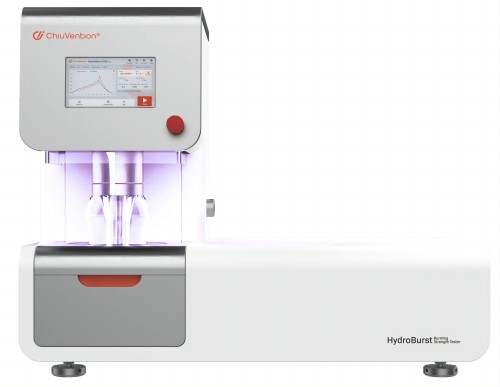others
Bursting Strength Machine: Essential Equipment for Fabric and Material Testing

Introduction
Bursting Strength Machine. In industries where materials are subject to pressure and stress, bursting strength is a critical quality parameter. The bursting strength machine is a specialized testing instrument used to evaluate how much pressure a material—such as fabric, paper, leather, or cardboard—can withstand before it ruptures. This test is especially important in the textile, packaging, automotive, and medical industries to ensure product durability, safety, and compliance with quality standards.
This article covers what a bursting strength machine is, how it works, the types available, key features, industry standards, and its broad range of applications.
What Is a Bursting Strength Machine?
A bursting strength machine is a laboratory instrument designed to measure the maximum pressure a material can resist before bursting when force is applied perpendicularly and uniformly over its surface. This is particularly useful for materials that experience multidirectional stress in real-world use, such as knitted fabrics, packaging papers, or woven sacks.
It helps manufacturers and quality control teams determine whether a material is strong enough for its intended application.
Working Principle of Bursting Strength Machine
The basic principle involves applying gradually increasing pressure to a test specimen until it ruptures. The machine records the peak pressure at the point of burst, which is the material’s bursting strength.
There are two main types of bursting strength testing mechanisms:
1. Hydraulic (Diaphragm) Method
Standard: ASTM D3786, ISO 13938-1
- A flexible rubber diaphragm is placed under the test sample.
- Hydraulic fluid pressure is increased below the diaphragm.
- The diaphragm bulges, pressing against the material.
- The pressure continues until the sample bursts.
- The maximum pressure reached is recorded as the bursting strength.
This method is widely used for textile fabrics, especially knits and nonwovens.
2. Pneumatic or Ball Burst Method
Standard: ASTM D3787
- A steel ball or pneumatic probe is pushed through the fabric using controlled force.
- The force needed to burst the sample is measured.
- This method is more suitable for thicker, coated, or composite materials.
Key Components of a Bursting Strength Machine
- Pressure System: Either hydraulic (fluid-based) or pneumatic (air-based), used to apply force.
- Rubber Diaphragm: Transfers pressure to the material evenly.
- Sample Clamping System: Holds the sample firmly in place during the test.
- Load Cell or Pressure Sensor: Accurately detects the force or pressure applied.
- Digital Display or Touchscreen Interface: Shows real-time pressure data and stores test results.
- Software Integration (in advanced models): Allows automatic data logging, analysis, and reporting.
Standard Testing Procedures
Most bursting strength machines follow international test methods to ensure repeatability and consistency:
- ASTM D3786 – Hydraulic bursting strength of textile fabrics.
- ASTM D3787 – Ball burst test for coated and nonwoven fabrics.
- ISO 13938-1/2 – Bursting strength tests using hydraulic or pneumatic systems.
- ISO 2758 – Bursting strength of paper.
- TAPPI T403 – Bursting strength of paper and board.
Applications of Bursting Strength Machines
Bursting strength machines are versatile and widely used across industries:
1. Textile Industry
- Tests the strength of woven, knitted, and nonwoven fabrics.
- Ensures materials used in sportswear, furniture, and automotive interiors can withstand pressure.
2. Packaging Industry
- Evaluates the durability of paperboard, corrugated fiberboard, and cartons.
- Prevents product loss or damage during storage and transit.
3. Medical and Technical Textiles
- Assesses materials for surgical gowns, wound dressings, and filters to ensure safety under pressure.
4. Leather and Footwear
- Tests the strength of leather used in shoes, bags, and apparel.
5. Industrial Fabrics
- Used in quality control for tarpaulins, geotextiles, inflatable fabrics, and airbags.
Benefits of Using a Bursting Strength Machine
- ✅ Reliable Quality Control: Helps maintain consistent product standards.
- ✅ Improved Product Durability: Identifies weak materials before they enter production.
- ✅ Regulatory Compliance: Ensures materials meet international standards.
- ✅ Cost Efficiency: Prevents failures, returns, and warranty claims.
- ✅ Ease of Use: Most modern machines are automated and user-friendly.
Factors Affecting Bursting Strength Test Results
- Material Type: Fiber content, weave/knit structure, and density all impact bursting strength.
- Environmental Conditions: Humidity and temperature can alter material behavior.
- Sample Preparation: Improper sample size or clamping can produce inconsistent results.
- Machine Calibration: Regular calibration is essential for accurate readings.
Choosing the Right Bursting Strength Machine
When selecting a bursting strength machine, consider:
- ✅ Type of material to be tested (fabric, paper, leather, etc.)
- ✅ Required test standard compliance (ASTM, ISO, TAPPI)
- ✅ Load capacity and pressure range
- ✅ Digital vs. manual interface
- ✅ Integration with lab software or data systems
- ✅ After-sales service and calibration support
Conclusion
The bursting strength machine is a vital tool in the quality assurance toolkit for multiple industries. It ensures that materials can withstand real-world stress without failure, safeguarding product performance and user safety. Whether you’re testing delicate fabrics, industrial packaging, or medical textiles, investing in a reliable bursting strength machine helps deliver stronger, safer, and higher-quality products.
As global standards become stricter and consumer expectations rise, the need for precise, repeatable material strength testing will only grow—making the bursting strength machine more important than ever.
For more information on textile testing methods/standards
or textile testing machines, contact us:
What’s App: +86 180 2511 4082
Tel: +86 769 2329 4842
Fax: +86 769 2329 4860
Email: sales@tes.hk

 entertainment2 months ago
entertainment2 months agoOnionFlix: Everything You Need to Know About This Streaming Website

 others21 hours ago
others21 hours agoNook vs Kindle: Which E-Reader Is Right for You?

 education4 weeks ago
education4 weeks agoHow to Become a Software Engineer: A Complete Guide

 gaming2 months ago
gaming2 months agoMelisandre: The Enigmatic Priestess of Game of Thrones

















